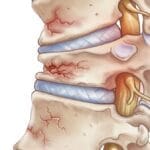Introduction
Arm pain during pregnancy is a common issue many expectant mothers experience. This pain can be caused by a variety of factors, including hormonal changes, weight gain, fluid retention, and changes in posture. It is important for healthcare providers to understand the underlying causes and effective management strategies to help pregnant women alleviate discomfort while ensuring the safety of both the mother and the baby. This comprehensive article explores the causes, management techniques, and frequently asked questions related to arm pain during pregnancy.
1. Understanding the Causes of Arm Pain During Pregnancy
Hormonal Changes and Fluid Retention
During pregnancy, hormonal changes, particularly the increase in relaxin, can lead to loosening of the ligaments, which may contribute to joint instability and pain. Additionally, fluid retention is common during pregnancy and can cause swelling in the arms, leading to conditions such as carpal tunnel syndrome.
Weight Gain and Postural Changes
As the baby grows, the extra weight can alter the mother’s posture, leading to additional strain on the arms and upper body. This strain can manifest as muscle pain, especially in the shoulders and upper arms.
Nerve Compression
Conditions like carpal tunnel syndrome and thoracic outlet syndrome are common during pregnancy due to nerve compression caused by swelling and changes in posture. These conditions can result in pain, numbness, and tingling sensations in the arms and hands.
2. Non-Pharmacological Management Strategies
Exercise and Stretching
Engaging in regular, gentle exercises that focus on strengthening and stretching the muscles of the arms, shoulders, and upper back can help alleviate pain. Exercises such as wall push-ups and seated rows, as well as stretches like the triceps and shoulder stretch, are particularly beneficial.
Physical Therapy
For persistent pain, physical therapy can be an effective treatment option. A physical therapist can provide tailored exercises and manual therapy techniques to alleviate pain and improve posture.
Ergonomic Adjustments
Making ergonomic adjustments in daily activities, such as ensuring proper wrist support while typing or using a pillow to support the arms while sleeping, can help reduce strain on the arms.
Heat and Cold Therapy
Applying heat to the affected area can help relax tight muscles, while cold therapy can reduce inflammation and numb sharp pain. Alternating between the two can be particularly effective for managing pain.
Massage and Acupuncture
Massage therapy can help relieve muscle tension, while acupuncture has been shown to be effective in managing various types of pain, including arm pain during pregnancy.
3. Pharmacological Interventions
Safe Medication Use
Paracetamol (acetaminophen) is generally considered safe for managing pain during pregnancy. However, it is important to avoid NSAIDs, especially in the later stages of pregnancy, as they can affect fetal development. Always consult with a healthcare provider before taking any medication.
Topical Analgesics
Topical creams and gels containing menthol or capsaicin may provide localized pain relief without significant systemic absorption, making them a safer option during pregnancy.
4. Complications and When to Seek Medical Advice
Carpal Tunnel Syndrome
This condition, characterized by pain, numbness, and tingling in the hands and arms, is common during pregnancy due to swelling. It typically resolves after childbirth, but severe cases may require splinting or even surgical intervention.
Thoracic Outlet Syndrome
This condition involves compression of nerves and blood vessels in the space between the collarbone and first rib, leading to pain and numbness in the arm. Severe cases may require physical therapy or surgery.
Preeclampsia
In rare cases, arm pain can be a symptom of preeclampsia, a serious condition characterized by high blood pressure. If arm pain is accompanied by severe headache, visual disturbances, or swelling, immediate medical attention is necessary.
5. Frequently Asked Questions
Q1: Is it normal to experience arm pain during pregnancy?
- A: Yes, arm pain is common due to hormonal changes, weight gain, and fluid retention. However, it’s important to differentiate between normal discomfort and symptoms that may indicate a more serious condition.
Q2: What exercises can help alleviate arm pain during pregnancy?
- A: Gentle exercises like wall push-ups, seated rows, and triceps stretches can help strengthen muscles and reduce pain. Always consult with a healthcare provider before starting any exercise routine.
Q3: Can I take pain medication for arm pain during pregnancy?
- A: Paracetamol is generally safe, but NSAIDs should be avoided, especially in the third trimester. Always check with your healthcare provider before taking any medication.
Q4: When should I seek medical attention for arm pain during pregnancy?
- A: Seek medical advice if the pain is severe, persistent, or accompanied by symptoms such as swelling, severe headache, or visual disturbances, as these could be signs of a more serious condition.
Q5: Can arm pain during pregnancy affect my ability to carry out daily activities?
- A: While mild pain may not interfere significantly, severe pain can impact daily activities. Ergonomic adjustments, physical therapy, and appropriate pain management strategies can help maintain function.
Conclusion
Managing arm pain during pregnancy requires a multifaceted approach that includes lifestyle adjustments, physical therapy, and, when necessary, safe pharmacological interventions. Understanding the underlying causes and knowing when to seek medical advice are crucial for ensuring the health and comfort of both the mother and baby. Healthcare providers should tailor their recommendations based on the individual needs of each patient, ensuring that pain management strategies are both effective and safe.
This article draws on insights from multiple authoritative sources, including medical journals and pain management guidelines, to provide a comprehensive overview of managing arm pain during pregnancy.





